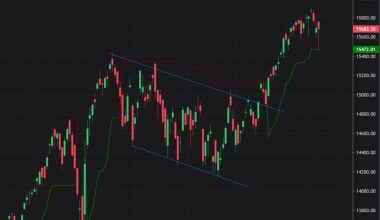Ever since Foreign Portfolio Investors (FPIs) were allowed to invest in the Indian capital market in 1991-92, they have been playing an important role in determining the trends in the stock market. There was a time when sustained FPI selling led to sharp market corrections. The situation has changed now. Domestic investors – through institutions and directly – have grown big enough to neutralize the FPI selling, and more importantly, are often calling the shots now.
Domestic investors maturing and playing a major role in the Indian capital market is a healthy and desirable development. Unlike the old generation that preferred to invest primarily in bank deposits and gold, the new generation is increasingly opting for equity as an asset class. The number of demat accounts has exploded from 4.09 crore in April 2020 to 12.97 crore in October 2023. The AUM of the mutual fund industry has grown from Rs 7.93 trillion in November 2012 to Rs 46.7 trillion in October 2023 – a growth of around six times in 11 years. Investments by National Pension Fund and insurance companies also are steadily increasing.
The net result of this emergence of domestic investors as a dominant force is that FPIs are becoming increasingly less influential in determining the market trend. During 2021 and 2022 FPIs sold equity for Rs 54,563 crore and Rs 1,45,660 crore, respectively. Despite this massive selling, the market was not impacted. Let us take the recent market trend. During August, September, October, and November till 15th, FIIs sold stocks for Rs 83,422 crore in the cash market. During the same period, DIIs bought stocks for Rs 77,995 crore, completely neutralizing the FII selling. HNIs and retail investors, too, were net buyers in the market. What happened to the Nifty during this period from early August to mid-November? Nifty remained almost flat at around 19,600 level, even though volatility was high.
It is important to note that it is not the sheer size or resources of the domestic investors that is enabling them to weaken the role of FPIs. There is an important difference in the investment strategy followed by domestic and foreign investors. Foreign investors invest in a variety of asset classes and across geographies. Domestic investors mainly focus on equity and partly in debt, that too, predominantly in India. Foreign portfolio investment is ‘hot money’ that will leave the country when there are external developments like rise in US bond yields, dollar appreciation or some external shock. Domestic money is largely immune to these external developments.
This dichotomy provides opportunities for domestic investors. For instance, during the last few months sustained FPI selling has been keeping the prices of large private banks depressed. FPIs were continuously selling banking stocks because this segment was the largest segment in the holding of FPIs: $ 205 billion in their total Assets Under Custody of $ 628 billion as per mid -November data. FPIs were selling because US bond yields were shooting up. But the banking sector is doing well with excellent profit growth, impressive credit growth and improving prospects. Similarly, there are blue chips from other sectors like IT where FIIs were selling. When the FPIs turn sustained buyers in India, which is only a matter of time, they will buy these very same blue chips they have been selling. This is the opportunity that DIIs are grabbing. Retail investors, too, should not miss this opportunity.







